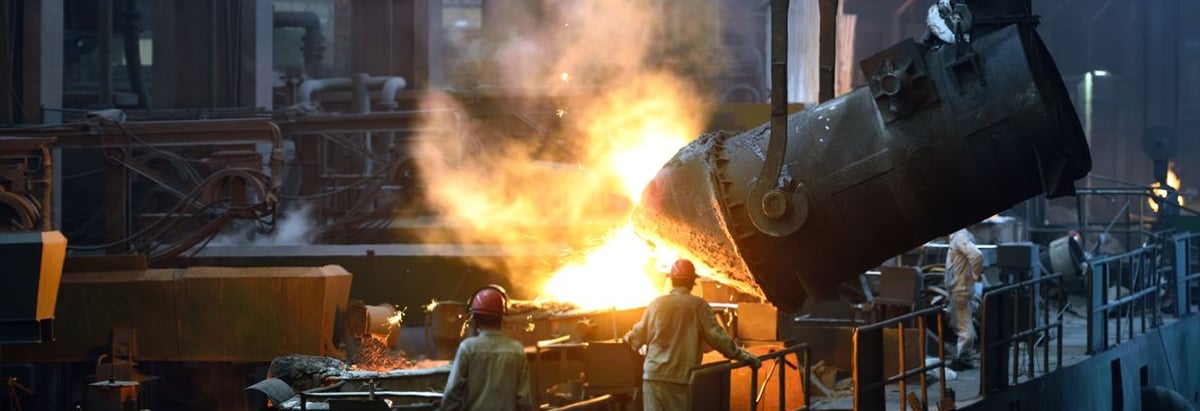- Germany
- /
- Metals and Mining
- /
- XTRA:TKA
Can thyssenkrupp AG's (ETR:TKA) ROE Continue To Surpass The Industry Average?

This article is intended for those of you who are at the beginning of your investing journey and want to better understand how you can grow your money by investing in thyssenkrupp AG (ETR:TKA).
With an ROE of 16.68%, thyssenkrupp AG (ETR:TKA) outpaced its own industry which delivered a less exciting 10.81% over the past year. Though, the impressiveness of TKA’s ROE is contingent on whether this industry-beating level can be sustained. This can be measured by looking at the company’s financial leverage. With more debt, TKA can invest even more and earn more money, thus pushing up its returns. However, ROE only measures returns against equity, not debt. This can be distorted, so let’s take a look at it further. View out our latest analysis for thyssenkrupp
Breaking down ROE — the mother of all ratios
Return on Equity (ROE) is a measure of thyssenkrupp’s profit relative to its shareholders’ equity. It essentially shows how much the company can generate in earnings given the amount of equity it has raised. Investors seeking to maximise their return in the Steel industry may want to choose the highest returning stock. But this can be misleading as each company has different costs of equity and also varying debt levels, which could artificially push up ROE whilst accumulating high interest expense.
Return on Equity = Net Profit ÷ Shareholders Equity
ROE is measured against cost of equity in order to determine the efficiency of thyssenkrupp’s equity capital deployed. Its cost of equity is 13.91%. Since thyssenkrupp’s return covers its cost in excess of 2.77%, its use of equity capital is efficient and likely to be sustainable. Simply put, thyssenkrupp pays less for its capital than what it generates in return. ROE can be split up into three useful ratios: net profit margin, asset turnover, and financial leverage. This is called the Dupont Formula:
Dupont Formula
ROE = profit margin × asset turnover × financial leverage
ROE = (annual net profit ÷ sales) × (sales ÷ assets) × (assets ÷ shareholders’ equity)
ROE = annual net profit ÷ shareholders’ equity

The first component is profit margin, which measures how much of sales is retained after the company pays for all its expenses. Asset turnover reveals how much revenue can be generated from thyssenkrupp’s asset base. The most interesting ratio, and reflective of sustainability of its ROE, is financial leverage. ROE can be inflated by disproportionately high levels of debt. This is also unsustainable due to the high interest cost that the company will also incur. Thus, we should look at thyssenkrupp’s debt-to-equity ratio to examine sustainability of its returns. The ratio currently stands at a high 216.20%, meaning thyssenkrupp may have taken on a disproportionate level of debt which is driving the high return. The company’s ability to produce profit growth may hinge on its big debt burden.

Next Steps:
ROE is a simple yet informative ratio, illustrating the various components that each measure the quality of the overall stock. thyssenkrupp exhibits a strong ROE against its peers, as well as sufficient returns to cover its cost of equity. Its high debt level means its strong ROE may be driven by debt funding which raises concerns over the sustainability of thyssenkrupp’s returns. Although ROE can be a useful metric, it is only a small part of diligent research.
For thyssenkrupp, there are three key factors you should further research:
- Financial Health: Does it have a healthy balance sheet? Take a look at our free balance sheet analysis with six simple checks on key factors like leverage and risk.
- Valuation: What is thyssenkrupp worth today? Is the stock undervalued, even when its growth outlook is factored into its intrinsic value? The intrinsic value infographic in our free research report helps visualize whether thyssenkrupp is currently mispriced by the market.
- Other High-Growth Alternatives : Are there other high-growth stocks you could be holding instead of thyssenkrupp? Explore our interactive list of stocks with large growth potential to get an idea of what else is out there you may be missing!
New: Manage All Your Stock Portfolios in One Place
We've created the ultimate portfolio companion for stock investors, and it's free.
• Connect an unlimited number of Portfolios and see your total in one currency
• Be alerted to new Warning Signs or Risks via email or mobile
• Track the Fair Value of your stocks
Have feedback on this article? Concerned about the content? Get in touch with us directly. Alternatively, email editorial-team@simplywallst.com
Simply Wall St analyst Simply Wall St and Simply Wall St have no position in any of the companies mentioned. This article is general in nature. We provide commentary based on historical data and analyst forecasts only using an unbiased methodology and our articles are not intended to be financial advice. It does not constitute a recommendation to buy or sell any stock and does not take account of your objectives, or your financial situation. We aim to bring you long-term focused analysis driven by fundamental data. Note that our analysis may not factor in the latest price-sensitive company announcements or qualitative material.
About XTRA:TKA
thyssenkrupp
Operates as an industrial and technology company in Germany and internationally.
Undervalued with excellent balance sheet.
Similar Companies
Market Insights
Community Narratives



